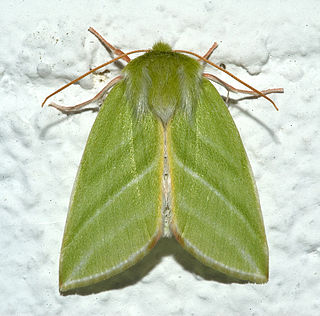
Nolidae is a family of moths with about 1,700 described species worldwide. They are mostly small with dull coloration, the main distinguishing feature being a silk cocoon with a vertical exit slit. The group is sometimes known as tuft moths, after the tufts of raised scales on the forewings of two subfamilies, Nolinae and Collomeninae. The larvae also tend to have muted colors and tufts of short hairs.

Bocula is a genus of moths in the family Erebidae. The genus was erected by Achille Guenée in 1852.
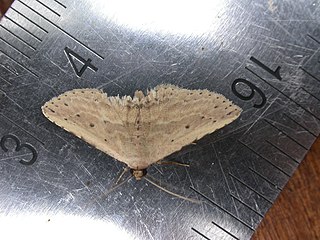
Hyposada is a genus of moths of the family Erebidae.

Psimada is a monotypic moth genus of the family Noctuidae. Its only species, Psimada quadripennis, is found in the Indian subregion, southern China, Taiwan, Myanmar, Thailand, Sri Lanka, the Andaman Islands, Sundaland, Sulawesi and Seram. Both the genus and species were first described by Francis Walker in 1858.

Daplasa is a genus of moths in the subfamily Lymantriinae of the family Erebidae erected by Frederic Moore in 1879. It is the sole member of the tribe Daplasini erected Jeremy Daniel Holloway and Houshuai Wang in 2015.

Chorodna is a genus of moths in the family Geometridae. One of its synonyms is Medasina.

Comostola is a genus of moths in the family Geometridae erected by Edward Meyrick in 1888. They are found primarily in Asia and Australia.

Herochroma is a genus of moths in the family Geometridae. The genus was described by Charles Swinhoe in 1893.

Sarcinodes is a genus of moths in the family Geometridae erected by Achille Guenée in 1857. The species are large with pinkish, mauvish or brownish-gray body and wings. The wings are traversed by between one and three oblique, straight fasciae. The forewing apex is acute, slightly falcate. The male antennae are unipectinate, those of the female are typically filiform, in some species unipectinate. The species are found in east Asia.

Sauris is a genus of moths in the family Geometridae erected by Achille Guenée in 1857.
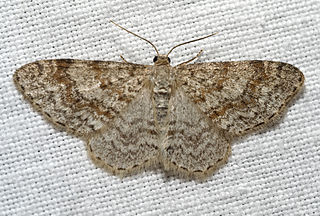
Asthenini is a tribe of geometer moths under subfamily Larentiinae first described by Warren in 1893. The tribe has been combined with Eupitheciini in the past, most notably by Jeremy Daniel Holloway in his work The Moths of Borneo.

Hypolamprus is a genus of moths of the family Thyrididae described by George Hampson in 1893.
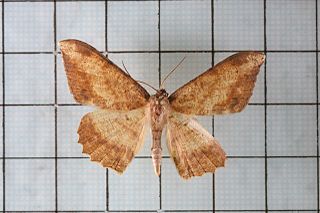
Luxiaria amasa is a moth in the family Geometridae first described by Arthur Gardiner Butler in 1878. It is found from south-eastern Siberia to Korea, Japan, northern India, Nepal, Taiwan, Borneo, Sumatra, Java and Sulawesi.
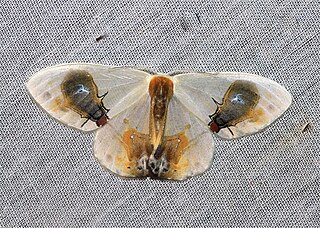
Macrocilix maia is a moth in the family Drepanidae first described by John Henry Leech in 1888. It is found in India, Japan, Taiwan, Korea, China, Peninsular Malaysia, Sumatra and Borneo.
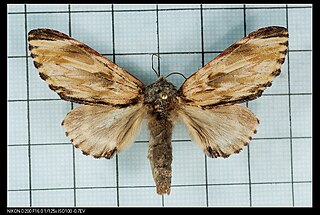
Neopheosia is a monotypic moth genus of the family Notodontidae described by Shōnen Matsumura in 1920. Its only species, Neopheosia fasciata, was first described by Frederic Moore in 1888. It is found in the Himalayas, Taiwan, Sundaland, Buru and Japan.
Asura calamaria is a moth of the family Erebidae first described by Frederic Moore in 1888. It is found in from the north-eastern Himalayas to Sundaland, including Myanmar. The habitat consists of disturbed forests, including disturbed alluvial forests and remnants of primary montane forests.
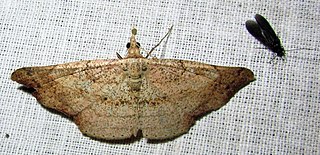
Ozola minor is a moth of the family Geometridae first described by Frederic Moore in 1888. It is found in Sri Lanka, India, the Andaman Islands, Sumatra, Borneo, the Philippines and Sulawesi.

Sauris interruptata is a moth of the family Geometridae first described by Frederic Moore in 1888. It is found in India's north-east Himalayas, Sri Lanka, the Ryukyu Islands, Taiwan, Myanmar, Peninsular Malaysia, Borneo, the Philippines, and possibly the Moluccas and New Guinea.
Hypolamprus angulalis is a moth of the family Thyrididae first described by Frederic Moore in 1888. It is found in Malaysia, Myanmar and Sri Lanka.
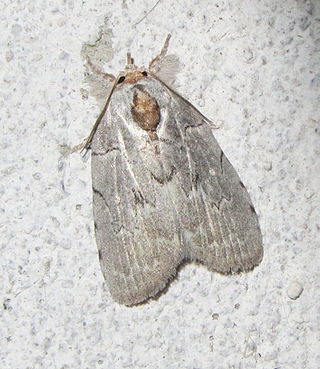
Ptisciana seminivea is a moth of the family Nolidae first described by Frederic Moore in 1888. It is found in Oriental tropics of India, Sri Lanka, to Sundaland, the Philippines and Sulawesi.

















